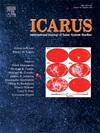UPRS-1:模拟火星乌托邦平原的风化层
IF 2.5
2区 物理与天体物理
Q2 ASTRONOMY & ASTROPHYSICS
引用次数: 0
摘要
了解火星土壤的组成和性质对于有效载荷和着陆器的科学研究和工程测试至关重要,这就是为什么在没有火星样品返回地球的情况下,在各种应用中使用模拟。现有的模拟主要基于火星的全球表面物质和火星南部高地的一些地区,而忽略了北部低地,如乌托邦平原。中国“天文一号”任务的“朱戎”探测器探索了乌托邦平原,从地表物质中收集了大量的物理和化学数据,并促进了代表北部低地的新的火星模拟物的开发。为此,我们开发了Utopia Planitia Regolith Simulant-1 (UPRS-1)来模拟Utopia Planitia的土壤特性,并对UPRS-1的高相似性进行了定量评价。经定量评价,UPRS-1的总体相似度参数为86.1%。此外,其组成可适应特定的研究要求,使其能够应用于多种领域,包括岩土工程实验、原位资源利用(ISRU)技术、勘探任务地面试验和天体生物学。本文章由计算机程序翻译,如有差异,请以英文原文为准。
UPRS-1: A regolith simulant of Utopia Planitia, Mars
Understanding the composition and properties of Martian soils is crucial for scientific research and engineering tests for payloads and landers, which is why simulants are utilized in diverse applications in the absence of Martian samples returned to Earth. Existing simulants are predominantly based on the global Martian surface materials and some regions in the southern highlands of Mars, neglecting the northern lowlands such as Utopia Planitia. The Zhurong rover of the Chinese Tianwen-1 mission explored Utopia Planitia, collecting extensive physical and chemical data from surface materials and facilitating the development of a new Mars simulant representing the northern lowlands. Thus, we developed Utopia Planitia Regolith Simulant-1 (UPRS-1) to replicate the soil properties of Utopia Planitia and proposed a quantitative evaluation to assess the high similarity of UPRS-1. The overall similarity parameter of UPRS-1 is 86.1 % via quantitative evaluation. Additionally, its composition is adaptable to specific research requirements, enabling its application in diverse fields, including geotechnical experiments, in-situ resource utilization (ISRU) technology, ground tests for exploration missions, and astrobiology.
求助全文
通过发布文献求助,成功后即可免费获取论文全文。
去求助
来源期刊

Icarus
地学天文-天文与天体物理
CiteScore
6.30
自引率
18.80%
发文量
356
审稿时长
2-4 weeks
期刊介绍:
Icarus is devoted to the publication of original contributions in the field of Solar System studies. Manuscripts reporting the results of new research - observational, experimental, or theoretical - concerning the astronomy, geology, meteorology, physics, chemistry, biology, and other scientific aspects of our Solar System or extrasolar systems are welcome. The journal generally does not publish papers devoted exclusively to the Sun, the Earth, celestial mechanics, meteoritics, or astrophysics. Icarus does not publish papers that provide "improved" versions of Bode''s law, or other numerical relations, without a sound physical basis. Icarus does not publish meeting announcements or general notices. Reviews, historical papers, and manuscripts describing spacecraft instrumentation may be considered, but only with prior approval of the editor. An entire issue of the journal is occasionally devoted to a single subject, usually arising from a conference on the same topic. The language of publication is English. American or British usage is accepted, but not a mixture of these.
 求助内容:
求助内容: 应助结果提醒方式:
应助结果提醒方式:


